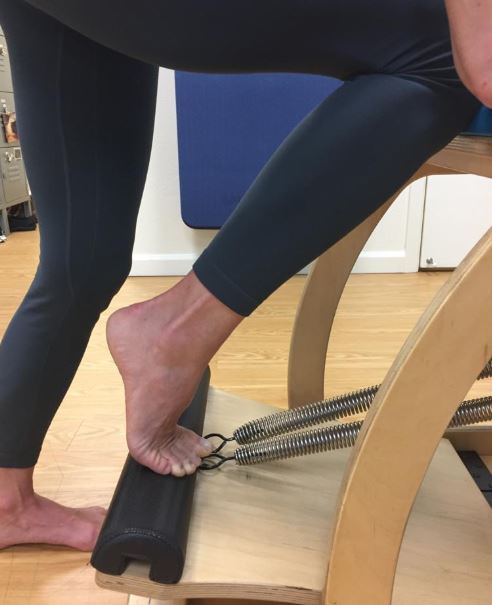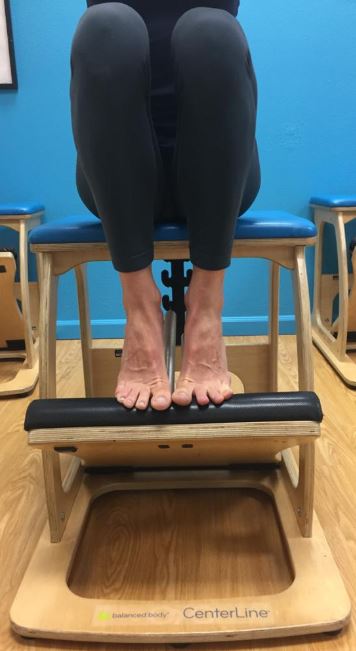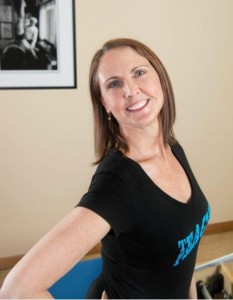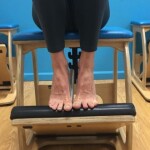Issue #303 – Wednesday June 3, 2020
Pilates for the Ageing Population – the Power of the Feet
by Amy Alpers
I’ve been teaching Pilates for 30+ years now, and some of my clients have been with me nearly as long. Consequently, some are now in the “senior” classification. And the ageing population in general is turning to Pilates more and more, so we see new senior clients as well. As we know, Pilates himself said age is not just a number; it’s how flexible your spine is. In other words, we can have senior clients (let’s say, over 65) who are actually quite spry and youthful, as well as younger clients who appear and feel much older than their years. While I certainly agree with Joe, that your spine must remain flexible for your health, I have come to believe there is another part of the human body that can tell someone’s “age” quite directly– their feet.
Foot pain is one of the leading causes of people losing their willingness to walk and maintain their fitness. And it’s not just pain in the foot that causes this either – it’s poor foot function as well. A badly organized, weak, tight or misaligned foot can lead to other issues such as knee, hip and back pain. When I work with clients who complain of any of these other issues, some of whom have already had joint replacements and other surgeries, I always look at the foot function first.

“The human foot is a masterpiece of engineering and a work of art.” Leonardo da Vinci
When you step back and get a good whole body perspective on a human skeleton you can see clearly that the weight of the entire structure and all its contents must funnel through the bone at the bottom of each shin (Tibia) – the Talus – and then spread out onto the arches of the feet. The body must be beautifully aligned from head to ankle to enable this. However, just like your car, you can have the whole thing perfectly aligned, but if you put it on flat tires, this perfection will not last. This is true of the human too. If the foot arches are not doing their jobs well, all your hard work may be for naught.
The human foot is designed for many functions. It supports our weight, it propels us, it shock absorbs, it balances you, adapts to different surfaces, helps pump venous blood back to the heart, and it provides proprioceptive information to the brain. Sadly, many feet have lost some or all of these skills. And our nervous systems suffer for this. We are not as aware or alert as we should be.
If you look at the skeleton again you will notice an amazing natural design that can help you understand and remember the foot’s anatomy better. Starting from the hip joint down, we have 1 bone – the Femur; then 2 bones – the Tibia and Fibula; then 3 bones – the Talus, Calcaneus and Navicular; then 4 bones – the Cuboid and 3 Cuneiforms; then 5 bones – the Metatarsals. Then, after that, we have many smaller bones in the toes as well – 2 in the big toe, and 3 in each of the other 4 for a total of 14. So in the foot we have 3+4+5+14=26 bones. And this expanding design in our limbs happens in nature all over the place.
These 26 bones are held together in natural perfection via elastic cables such as ligaments, muscles, tendons, fascia, etc. to create a springy collection of arches. There is one longitudinal arch from the inner heel to the big toe joint, another from the outer heel to the little toe joint. And one horizontal arch from the big toe joint to the little toe, often referred to as the metatarsal arch. In ideal alignment, the three points – heel, big toe ball, little toe ball – create a stable triangle of strong, flexible arches for the entire weight of the body to balance upon.
Here is where the problem often lies. One or more of those foot arches may have become misaligned, collapsed, weakened or hardened over time, and therefore, are no longer doing their best job of holding and moving the person. Consequently, because many of the muscles in the foot attach up into the lower leg, the calves are often working incorrectly as well. And so on up the body.
Here are some great Pilates exercises I find really help to bring back the spring in their step.
The Low/Wunda Chair may be your best friend for these clients. The Foot/Ankle exercise, for example, is awesome. Because you can vary spring tensions here, it may be your best bet to begin strengthening the feet and calves. The inability to lift the heels up is often a big part of the issue, due to no arch or calf strength, so focusing on the calf muscles contracting upwards as the client pushes the pedal downwards can be very effective.

Standing Pumping on the Low/Wunda Chair is a bit more advanced, but begins to build more balance and strength in the whole body from the feet up. Be careful to not allow hyperextension of the knee or collapse of the foot arches on the standing leg. Also, have the client focus on keeping the heel lifted as much as possible on the pumping leg.
Of course, seated Footwork and Pumping (2 legs or 1) are great too. Sometimes Footwork on the Reformer is very difficult for these clients – especially the heel up positions – so the Chair can be a great substitute.

If the client can handle the balance aspect, the Releve-plie exercise on the Ped-o-pul is also very powerful and effective for strengthening the arches and calves.
Standing Foot Exercises, Towel Exercises, Inch-worming the feet (i.e. doming the foot as if pretending to pick up pencils) are all useful too.
Don’t give up. It can be incredibly challenging to get the feet doing their best job after having been stuck in shoes for so long, but keep trying. It’s worth it. In the end, the feet are key to staying healthy, fit and vital.
 Amy Taylor Alpers co-founded The Pilates Center (TPC) and The Pilates Center Teacher Training Program (TPCTTP) over 20 years ago in Boulder, Colorado. When not traveling the world to teach both foundational and graduate level Pilates teacher education she remains part of the core faculty for TPCTTP, mentors advanced teachers, teaches classes and sees clients. In addition to teaching TPC sponsored workshops, Amy has presented numerous times at the Pilates Method Alliance Annual Meeting, Balanced Body’s Pilates on Tour and Passing the Torch. In 2013, Amy presented at the Shared Traditions Conference for Fletcher Pilates and will present at The Pilates Roundtable.
Amy Taylor Alpers co-founded The Pilates Center (TPC) and The Pilates Center Teacher Training Program (TPCTTP) over 20 years ago in Boulder, Colorado. When not traveling the world to teach both foundational and graduate level Pilates teacher education she remains part of the core faculty for TPCTTP, mentors advanced teachers, teaches classes and sees clients. In addition to teaching TPC sponsored workshops, Amy has presented numerous times at the Pilates Method Alliance Annual Meeting, Balanced Body’s Pilates on Tour and Passing the Torch. In 2013, Amy presented at the Shared Traditions Conference for Fletcher Pilates and will present at The Pilates Roundtable.
Amy was born in Youngstown, Ohio where she began classical ballet at age two.
She attended The Juilliard School for Dance, danced with the Garden State Ballet in New Jersey, and received a B.A. in Dance and a M.A. in Dance History from New York University. In addition, Amy taught ballet at various dance schools in New York City for ten years before launching her Pilates career.
Both Amy and her sister Rachel studied Pilates under the direct tutelage of Romana Kryzanowska at the original Pilates Studio in New York City. They received their Pilates teaching certificate from there in July of 1989. In 1990, after moving to Boulder, Colorado, Amy and Rachel founded The Pilates Center. The sisters then created and established The Pilates Center Teacher Training Program in 1991. The school has since expanded to include an Intermediate Program, Advanced Program, Bridge Program, Master’s Program, and a Mentorship Program. In addition, TPC now has “Licensed” and “Host” studios established all around the world.
Amy and her sister wrote The Everything Pilates Book, published in 2002. She was a founding board member of the PMA and sat on the board that created the PMA Certification Exam. Recently she has also had the honor of filming classes and workshops for online organizations such as Pilates Anytime and Pilates On Demand.
In 2011, Amy, her sister Rachel, and Ken Endelman of Balanced Body, developed CenterLine – a line of equipment designed for classical Pilates and based upon the specifications pioneered by Joseph Pilates.

